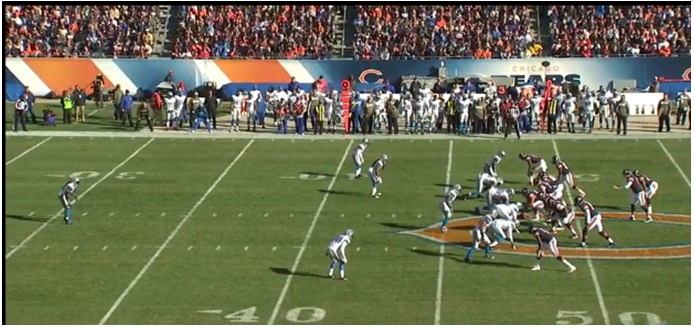This article
expands on my previous article, Part 1. The link is provided below.
http://theofficialpetersreport.blogspot.com/2015/03/curl-flat-variations-part-1-maximize.html
This article will focus on adjusting the play to better
attack two high defenses and man coverage where corners are in a trail
technique, such as man under two deep. The adjustment consists of the receivers
that are running the curl route to read the corner back (will be referred to as
CB to alleviate confusion with the corner route). If the CB trails or drops off
to the flat, the receiver has the option of running a corner route at a depth
of 10-12 yards. This adjustment turns the play into the traditional smash
concept, a high-low read on the CB. This small route adjustment creates a play
that contains two of the more popular passing concepts in the country. Putting
the two concepts into the same play minimizes verbiage and teaching time.
With this adjustment, the quarterback will now read the CB
instead of the outside linebackers. If the CB is trailing the receiver or jumps
the flat route, the quarterback throws the corner route. If the CB plays off
and keeps everything in front of him, the quarterback looks for the open window
to the curl route. If the window is tight, that means he has the flat route as
a check down.
An important coaching point when installing this concept is
establishing the main objective of the option route. If the defender is in a
position where he can play both the curl and the corner, which route should the
receiver run? The answer can vary based on your quarterback’s preference to
which route he likes better, or which route requires more anticipation.
Typically a curl route requires more anticipation, as the quarterback can see
the corner cut and still make the throw. If he waited for the curl to break
before he threw, it is often times too late.
Below are a series of screen captures of the New Orleans
Saints using this concept. I am not sure if they teach it as an option route,
but for our purposes it gets the job done. The first figure shows the
formation, the same as described in the previous article along with the play
diagrammed.
Credit: NFL.com
In the next figure, you can see the CB at the bottom pass
off the vertical release to react to the flat route.
Credit: NFL.com
In the final figure, the receiver breaks to the corner. Good route technique against a two high defense requires the corner route to flatten away from the safety.
Credit: NFL.com
Making small adjustments to your base plays can give your
players a better chance to succeed against a wider range of coverages.
Combining concepts is also a good way to minimize verbiage and allow the
players to practice less plays more frequently, all while having answers to
what the defense does.











